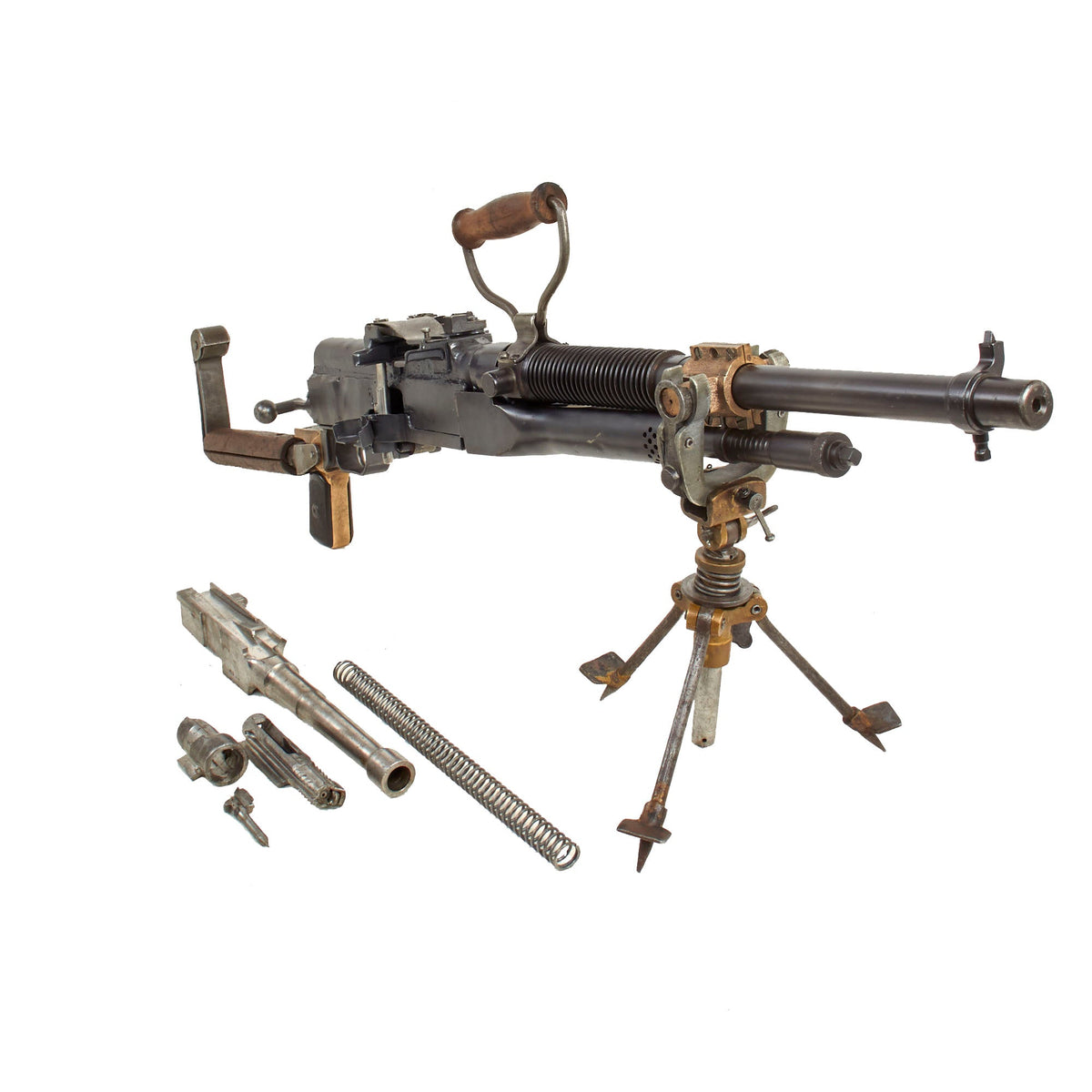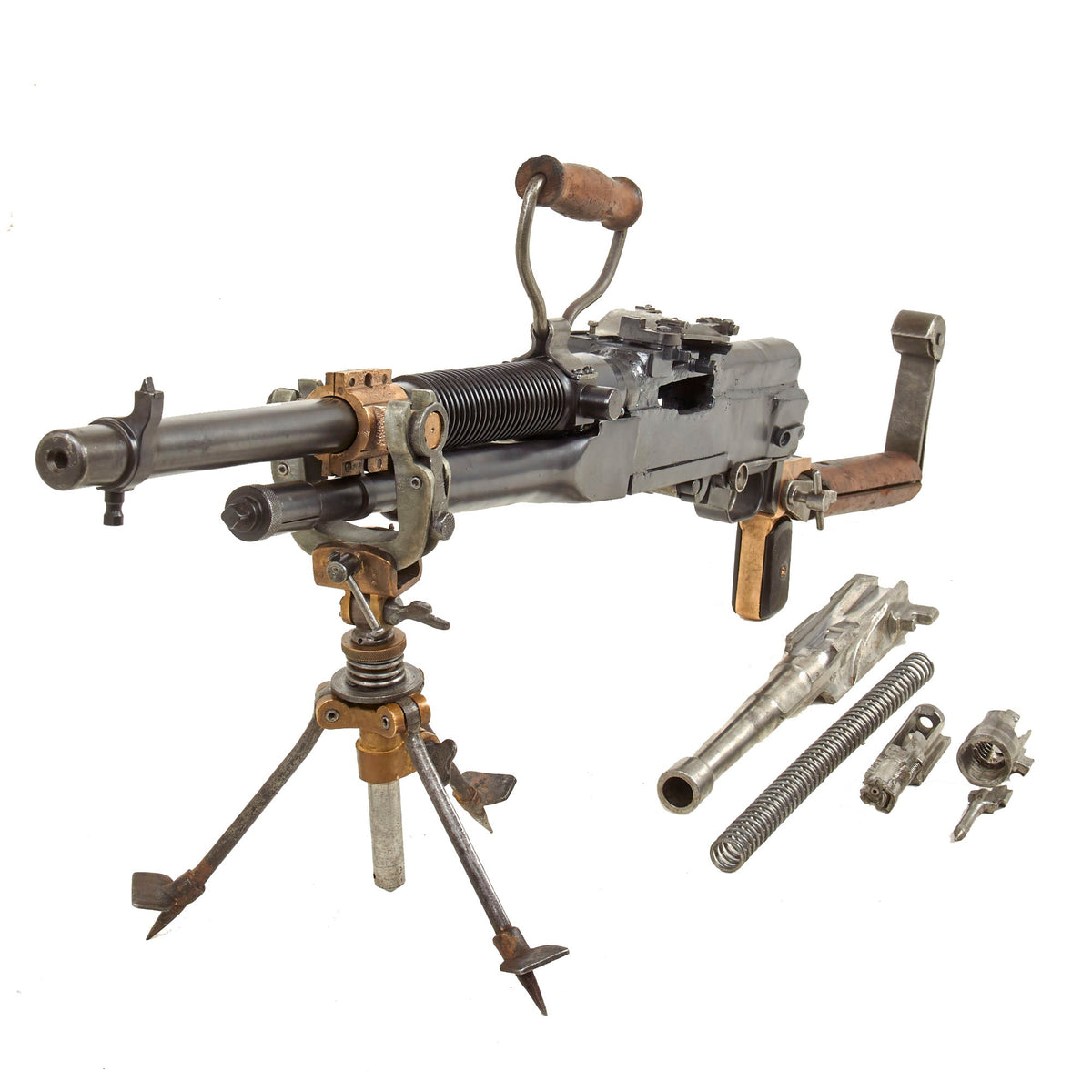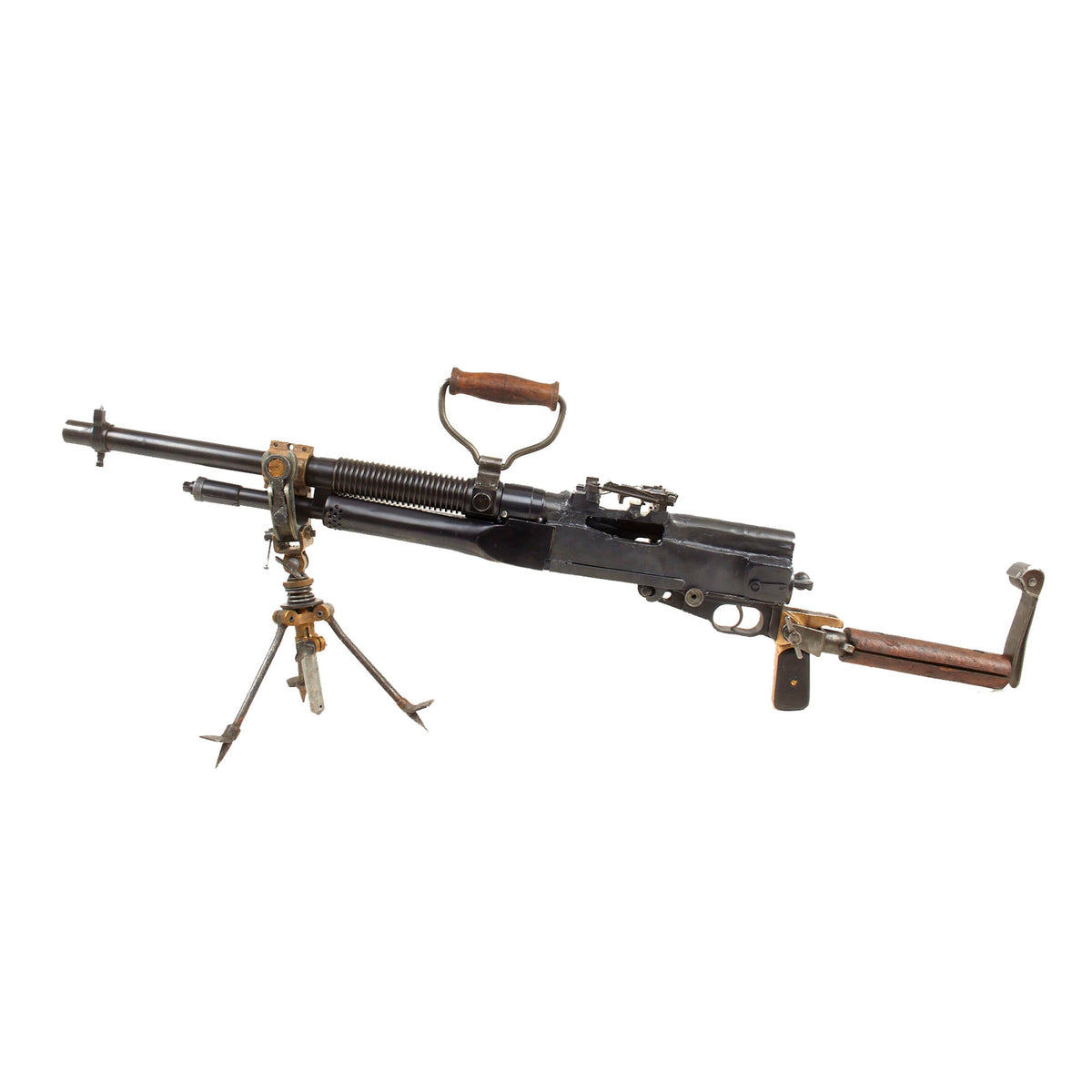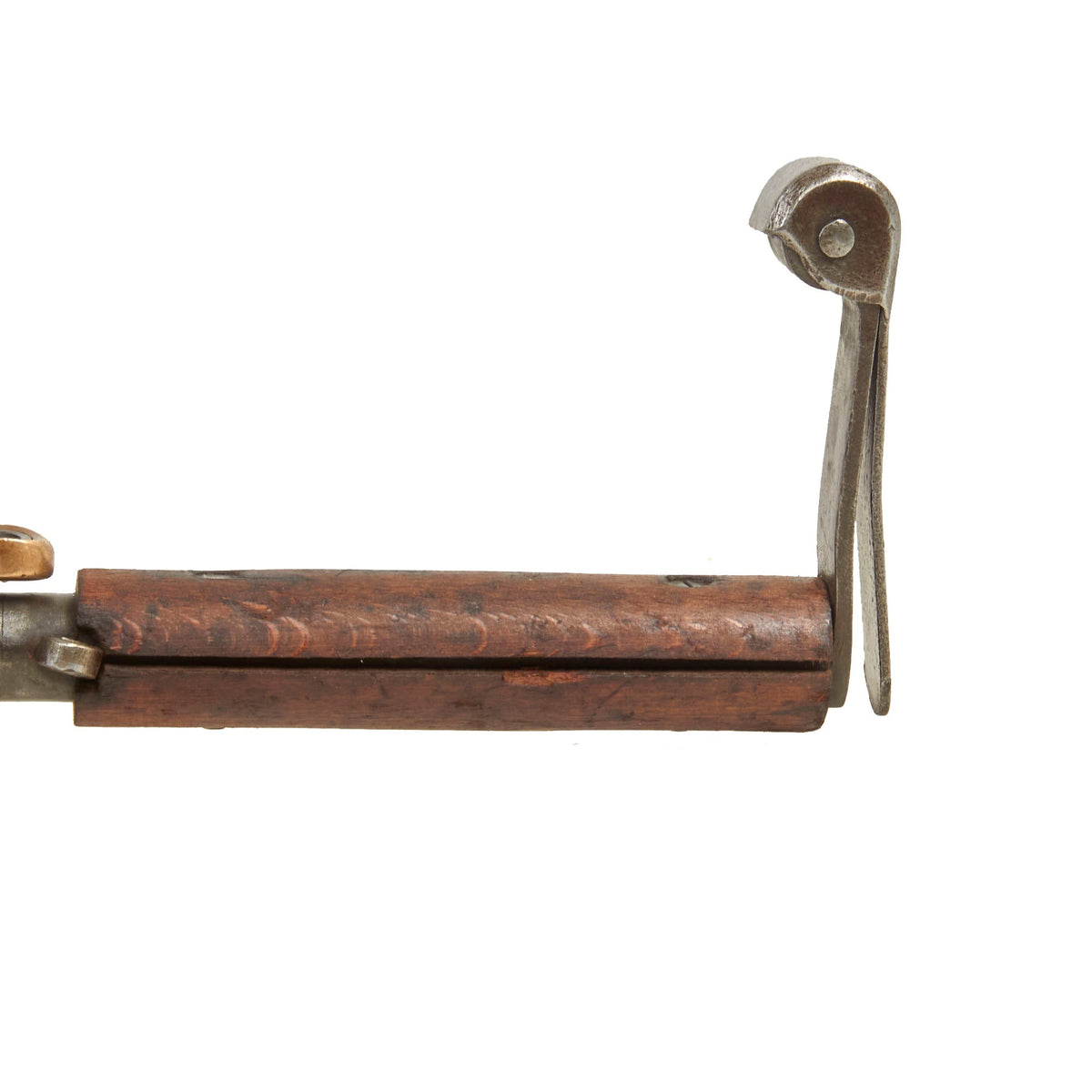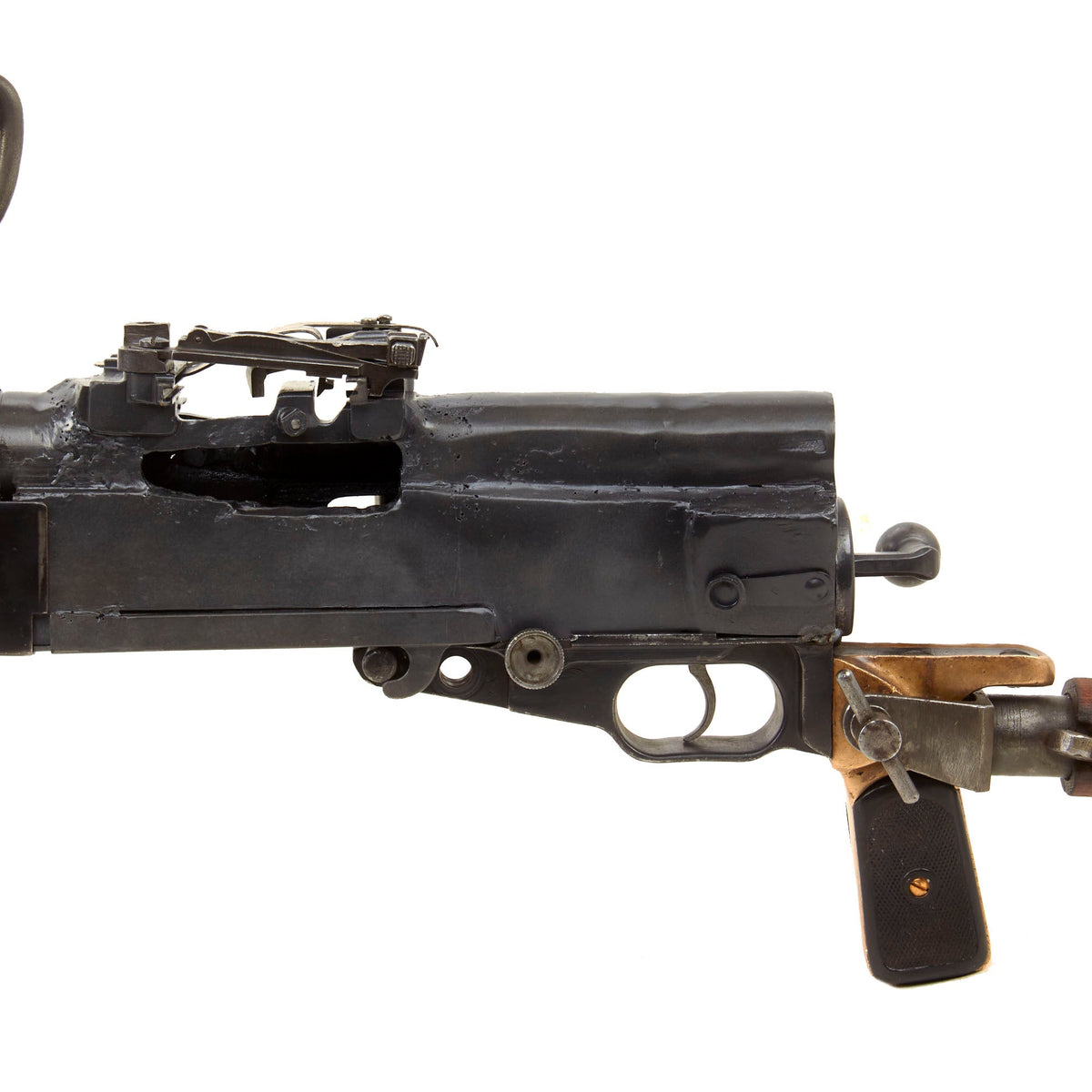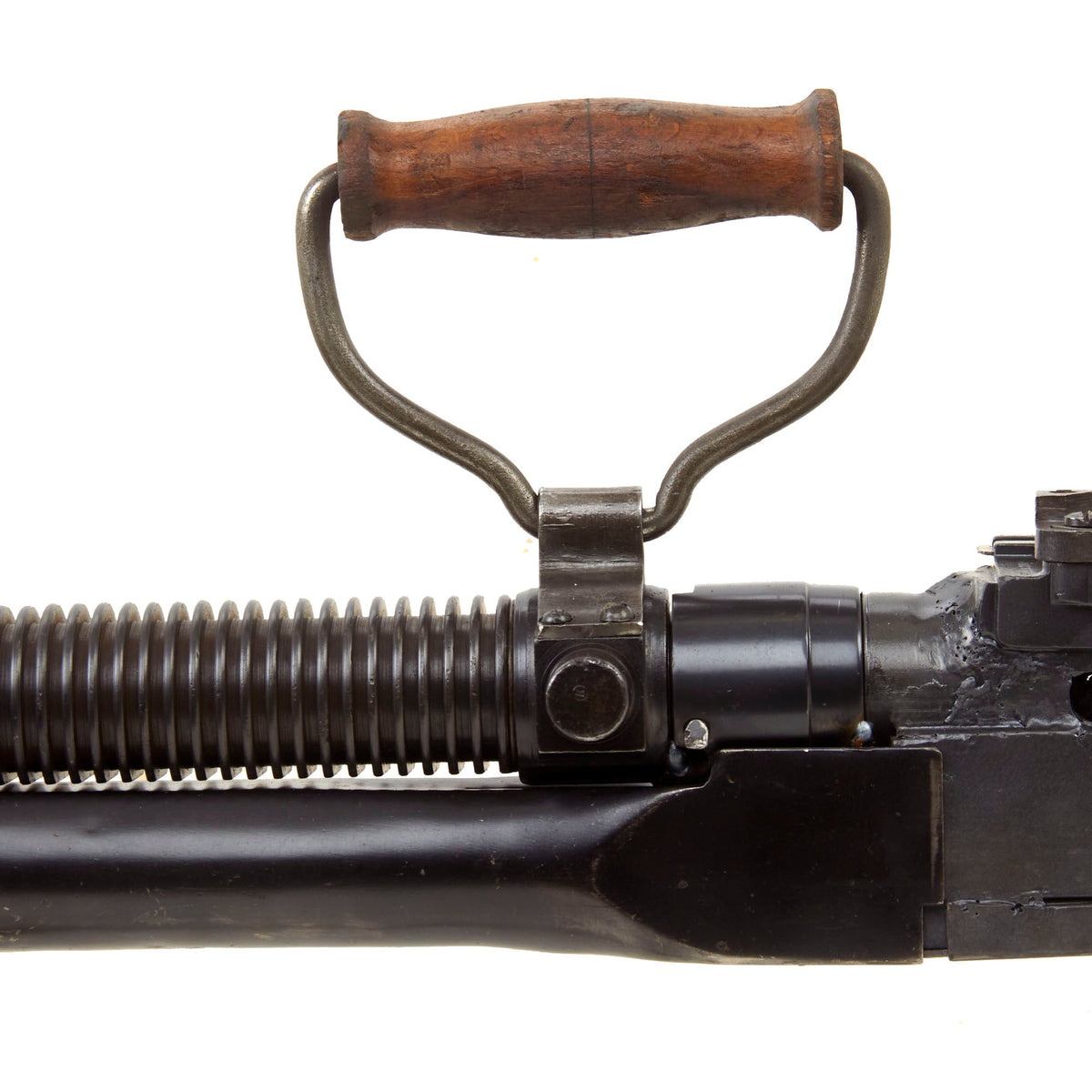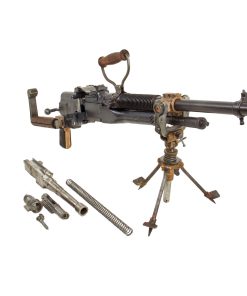Original British WWI Hotchkiss .303 Portative Demilled Receiver Display LMG with Internal Parts, Tripod, Shoulder Stock & Carry Handle Original Items
$ 2.995,00 $ 748,75
Original Item: Only One Available. This is a real treat!! We have sold numerous Hotchkiss .303 Portative Cavalry display guns over the years, however they were all built using machined aluminum dummy receivers. This fantastic example is built from a parts set using all original parts on an original BATF compliant non-firing static display receiver, making this a 100% legal display machine gun. This receiver was created by using portions of the original torch cut receiver, including the barrel bushing, combined with some new made steel portions. It has properly had at least 30% of the total length completely replaced entirely with solid steel bar stock. Meaning at least a 1/3 length section of the display receiver is solid steel, making this totally legal to own without a license of any kind.
The rest of the components are all original, complete with many issue markings, including serial number B / 28053 on the barrel and E 15223 on the rear receiver inner plate above the selector. It also comes with the internal components from the parts set, which include the bolt, recoil spring, gas piston, and more!
The display gun has the standard attached carry handle, standard issue 1918-dated “Crow’s Foot” Tripod by H&E, Carry Handle, and detachable “L” shoulder stock. These were extensively used in WWI, being the first truly portable machine gun. Very intricate and very rare!
Technically, this is the Mark I version in “Cavalry” configuration, with the pistol grip and detachable butt stock. It also has had an additional brass bushing mounted on the barrel for a second tripod attachment point, which made it more suitable for infantry use. Some call this the Mark I*.
Really a great example, ready to be part of any WWI display!
Hotchkiss Mark I Light Machine Gun In British Service The Hotchkiss Portative has a very interesting battle history, although the gun is not as widely known as the other British light machine gun, the Lewis. Adopted as the Hotchkiss Portable Machine Gun Mark I, it was based on the French Hotchkiss Model 1909. The British considered it more suitable for mounted troops cavalry and mounted infantry than the more cumbersome Lewis. It was used by some famous units in equally famous battles.
The Australian Light Horse, New Zealand Mounted Rifles Brigade, and the legendary Camel Corp used it in the Desert Campaign in Sinai and Palestine from 1915 1917. In Palestine, it was used by the 4th Australian Light Horse Brigade in their overwhelmingly successful attack at Beersheba (immortalized in the excellent film The Light Horsemen, 1987). This charge is known as the most successful attack by mounted infantry in history. The Mark I was used by the ANZACs in the Gallipoli Campaign, and by British mounted troops in the fighting on the Western Front.
Fast Shipping with Professional Packaging
Thanks to our longstanding association with UPS FedEx DHL, and other major international carriers, we are able to provide a range of shipping options. Our warehouse staff is expertly trained and will wrap your products according to our exact and precise specifications. Prior to shipping, your goods will be thoroughly examined and securely secured. We ship to thousands clients each day across multiple countries. This shows how we're dedicated to be the largest retailer on the internet. Warehouses and distribution centres can be located throughout Europe as well as the USA.
Note: Orders with more than one item will be assigned a processing date depending on the item.
Before shipping before shipping, we'll conduct a thorough inspection of the items you have ordered. Today, the majority of orders will be delivered within 48 hours. The delivery time will be between 3-7 days.
Returns
The stock is dynamic and we cannot completely manage it because multiple stakeholders are involved, including our factory and warehouse. So the actual stock may alter at any time. It's possible that you may not receive your order once the order has been made.
Our policy is valid for a period of 30 days. If you don't receive the product within 30 days, we are not able to issue a refund or an exchange.
You can only return an item if it is unused and in the same state as the day you received it. You must have the item in its original packaging.
Related products
Uncategorized
Uncategorized
Armored Burgonet Helmet & Polearm from Scottish Castle Leith Hall Circa 1700 Original Items
Uncategorized
Uncategorized
Uncategorized
Uncategorized
Uncategorized
Uncategorized
Uncategorized
Uncategorized
Band of Brothers ORIGINAL GERMAN WWII Le. F.H. 18 10.5cm ARTILLERY PIECE Original Items
Uncategorized
Uncategorized
Uncategorized
Uncategorized
Uncategorized
Uncategorized
Uncategorized
Uncategorized
Armoured Fighting Vehicles of the World: AFVs of World War One (Hardcover Book) New Made Items
Uncategorized
Uncategorized
